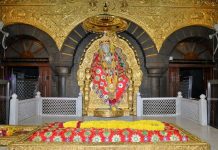Marrakesh is a city that fizzes with life, where the default-blue of the sky sings against peach-gold architecture. Whether it’s your first visit or your 15th, the technicolor souqs and the street theatrics of Djemaa El Fna, the city’s main square that’s perpetually filled with movement no matter the time of day, exert a magnetic pull.
But there are many other surprises to discover in this mysterious, magical city, and nowhere else quite lends itself so much to happenstance, to getting lost in the tumult of the crowd, diving off into hidden alleyways and uncovering the unexpected.
 Wander amongst giants at Cactus Thiemann, Africa’s largest cactus farm
Wander amongst giants at Cactus Thiemann, Africa’s largest cactus farm
Explore the cactus sea of Cactus Thiemann
On the outskirts of Marrakesh is the spiky sculptural expanse of Cactus Thiemann, which offers the rare experience of wandering amid cacti as tall as buildings. More than 150 varieties of cacti grow here, some ablaze with startlingly bright and alien-seeming flowers. This is a little known sight, yet it is Africa’s largest cactus farm, in a beautiful setting backed by the muscular Atlas Mountains. The farm was started by visiting German engineer Hans Thiemann, who came to Morocco in the 1960s to pursue his passion for the plants, and is now run by his descendants.
To visit, make an appointment by email ([email protected]); guided tours last 45 minutes and cost Dh150; they will give you the number of a taxi driver who knows the road when you book as it’s tricky to find.
 Enjoy a quiet mint tea in the courtyard of the Amal Center
Enjoy a quiet mint tea in the courtyard of the Amal Center
Feasting with a conscience
Off the beaten track, the tree-shaded, sun-dappled courtyard restaurant of the Amal Center is much more than meets the eye. At first glance, it’s traditional home-cooked food in a lovely setting, but Amal is not only about eating. Founded by Nora Belahcen Fitzgerald after meeting a single mother begging on the streets of Marrakesh, this nonprofit organisation sets out to empower local women. The restaurant provides free six-month training courses for women in financial difficulties so that they’re able to go on to find work. You can also take recommended cookery courses at the restaurant, where you’ll learn to cook a mean tajine and get to eat it at the end too.
Marrakesh’s female founder
Few visitors realise that a powerful woman was instrumental in Marrakesh’s founding more than 1000 years ago. Zaynab an-Nafzawiyyah, an alpha Berber queen, was the brilliant de-facto co-ruler of the Almoravid Empire, which spanned through modern-day Morocco, Algeria and Spain’s Andalusia, beside her husband, Yusuf ibn Tashfin. Discover the history of Zaynab and the role of other illustrious Moroccan women at Musée de la Femme.
 Peek inside the Lazama Synagogue, the oldest in the Jewish quarter of Marrakesh
Peek inside the Lazama Synagogue, the oldest in the Jewish quarter of Marrakesh
City within a city
Wandering through Marrakesh’s Jewish quarter, called the mellah, feels like you’ve stumbled onto a secret. Even though it’s only a few paces from the centre, the mellah has an atmosphere all of its own, with Stars of David etched above doorways and shaded balconies overlooking the narrow lanes. You can visit the Lazama Synagogue, which is still in use for its 400-strong congregation, explore the Mellah Market, renowned for its fabric, and visit the eerie Miaara Jewish Cemetery, a city of the dead stretching out into the distance with uniform rounded tombs, some whitewashed and some topped with stars or Hebrew inscriptions.
 The shops along ‘mechoui alley’ serve up slow-roasted lamb
The shops along ‘mechoui alley’ serve up slow-roasted lamb
Underground ovens
Not one for the fainthearted (there are disembodied sheep heads, dear reader), Mechoui Alley in the medina (the old walled city) behind the olive market is where those in the know head to dine on fragrant slow-roasted lamb. Each shop has a pit in the ground, into which lamb is lowered to slow roast on wood fires until it falls off the bone. The hole-in-the-wall food stands are staffed by white-robed men and run by generations of the same families. The menu is limited: tanjia (slow-cooked stew), mechoui and roasted sheep’s head, but it’s worth spending a lunchtime on a seat behind the counter, where you can dine on the delicious cumin-scented meat, drink mint tea and watch the world go by.
Marrakesh’s Warhol
Hassan Hajjaj is an artist and sculptor with an international reputation for his photographs of locals in fabulous traditional dress, ablaze with pop-art colour and in rock-star poses against the russet-pink walls of the medina. Nicknamed Marrakesh’s Andy Warhol, Hajjaj’s work is no secret, having had a recent retrospective at London’s Courtauld Institute, but savvy visitors can visit his gallery, tea room and shop at the beautifully decorated Riad Yima. It’s so alight with colour that it’s like stepping into one of his photographs, and this gallery is designed to be hands-on, eschewing the don’t-touch ethic of regular art shows.
 Brush up on local art at Dar Bellarj
Brush up on local art at Dar Bellarj
Hidden cultural hub
One of the many secrets of Marrakesh’s maze-like Medina is Dar Bellarj. If you didn’t know, you’d walk past it, tucked away as it is beside Ali Ben Youssef Medersa. Enter the doorway, and you’re in a riad, a traditional house centred on a gracious, shady courtyard, with alcoves off the white-washed looping colonnades of the inner courtyard. This is an arts centre celebrating living culture, with changing exhibitions on everything from Berber tattoos, photographic portraits and local weaving. Besides the always-worth-a-look exhibits, it’s an ideal hidden escape from the frenetic souqs and a serene place for a pick-me-up cup of Berber whiskey (mint tea).
Ancient recipes
The medina harbours many restaurants, but Riad Farnatchi’s Le Trou Au Mur (‘hole in the wall’ in French) has a menu that steps outside the regular offerings of tajine and couscous. This place, lined in stucco and portraits lent from the nearby Maison de la Photographie, feels truly hidden away – you’ll plunge into the labyrinth of medina streets to find the doorway off a narrow lane. The owners and chefs have set out to revive ancient cooking techniques and ingredients, with out-of-the-ordinary dishes such as tihane, stuffed offal with spiced kefta (meatballs), olives and preserved lemon; velvety mechoui from the restaurant’s oven; and fish baked with vermicelli and preserved lemons.
 Amizmiz is nestled at the base of the Atlas Mountains
Amizmiz is nestled at the base of the Atlas Mountains
A Berber escape
Occasionally you may crave a breather from the intensity of the city, and it only takes a short trip outside Marrakesh to reach another world, a Berber village in the foothills of Atlas Mountains. Amizmiz is a small settlement, only 55km south of the city. Time your visit for a Tuesday and you’ll get to experience the town’s traditional weekly market, when Berber villagers descend from miles around to sell their crafts, produce and spices. You can also take a walk out into the lush countryside, with snow-dusted mountains in the distance.
 True shopaholics leave the chaos of the medina for the artists workshops in Sidi Ghanem © Chris Griffiths / Lonely Planet
True shopaholics leave the chaos of the medina for the artists workshops in Sidi Ghanem © Chris Griffiths / Lonely Planet
Secret shopping
The shiny brassware and traditional Berber rugs of the souqs may be calling you, but where do seriously savvy shoppers in Marrakesh go to seek out contemporary design? The industrial area of Sidi Ghanem. It’s around 4km from the centre, and you can take a round-trip taxi trip here to check out the workshops, outlets and showrooms that specialise in the art of life, such as artisanal candles at Cote Bougie, the scents and creams of Les Sens de Marrakech or the work-of-art ceramics of LRNCE.




